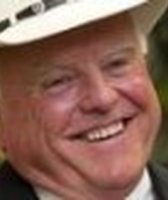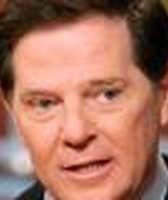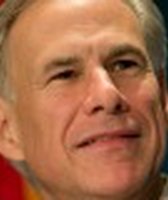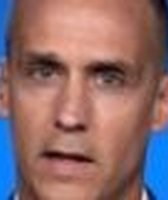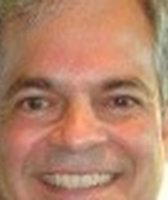Stand up for the facts!
Our only agenda is to publish the truth so you can be an informed participant in democracy.
We need your help.
I would like to contribute

Laura Pressley, an Austin City Council candidate, has said explosives were planted in the World Trade Center before the twin towers collapsed Sept. 11, 2001 (Associated Press, Mark Lennihan).
Laura Pressley, a candidate for the Austin City Council with a doctorate in chemistry, said she thinks a scientific study proves demolition materials were waiting in the Twin Towers when two jets struck on 9/11.
She hasn’t said Uncle Sam put the materials there.
In a Nov. 10, 2014, interview with us, Pressley said she recognized the techniques used in a 2009 study from her own laboratory experience and believed researchers found a high-tech substance used to melt steel in the dust of the collapsed towers.
"My sandbox is chemistry--analyzing the paper--and this (paper) strongly suggests there was explosive material in the debris," Pressley said. "I don't know what happened, I don't know how the explosive material got there; I just know it's there."
The paper Pressley cited was co-authored by a prominent advocate of the widely-disputed idea that a controlled demolition took down the two 110-story towers after the planes struck. Physicist Steven Jones, a retired Brigham Young University professor, has discussed controlled demolition on MSNBC and was quoted in September 2006 news reports about 9/11 conspiracy theories in The Washington Post and the New York Times.
The controlled demolition idea is a mainstay for a bloc of people in America and abroad who question federal reports on the cause of the towers’ collapse, including the group Architects & Engineers for 9/11 Truth and TV/radio commentator Alex Jones.
According to a September 2001 Times news story, experts shortly acknowledged the collapse resembled a controlled demolition. Yet that story also said engineers believed the crash of the jets and intense heat generated from thousands of gallons of burning jet fuel weakened the buildings' steel framework, causing upper floors to collapse and beginning an unstoppable chain reaction borne along by gravity.
Four years later, Popular Mechanics magazine ran a special report "debunking" the controlled demolition idea. The controlled demolition idea also has been challenged by federal reports and was addressed on the FAQ page of the National Institute of Standards and Technology’s 2005 World Trade Center report stating the institute, which is part of the U.S. Department of Commerce, "found no corroborating evidence for alternative hypotheses suggesting that the WTC towers were brought down by controlled demolition using explosives."
You may wonder how 9/11--or, precisely, the collapse of the towers--came up before Austin’s council election.
A 2012 recording
On Oct. 30, 2014, Austin’s KUT News posted on its website an audio recording of Pressley speaking from the audience at a July 29, 2012, panel discussion at an Austin bookstore titled "9/11 Debate: How Strong is the Evidence of a Larger Conspiracy?" According to the recording, Pressley said a study that matched debris in dust from Ground Zero to samples of high-tech explosives "convinced (her) 100 percent something was planted in the buildings."
After the Nov. 4 election, Pressley told Tara Doolittle of the Austin American-Statesman's editorial section that her remarks were taken out of context to insinuate she believed the U.S. government helped demolish the towers, which she said she did not say.
At the 2012 event, according to the recording posted by KUT, 90.5 FM, Pressley asked panelist Daniel Krawisz, then an engineering student with a master’s degree in physics, if he’d "read the chemical physics paper that was published on nanothermite."
Krawisz said he had not and Pressley shot back:
"I think that is really sad. You come here, you’re a physicist and you haven’t read the paper. Let me tell you what the paper says. The paper shows nanothermite – it looks at it morphologically with scanning electron microscopy and compares it directly to morphological samples gotten from the military. Exact SEMs that compare directly. Not only do the SEMs document comparison in exact morphology, they also use XPS."
She continued:
"XPS is a chemical analytical quantitative technique that shows exact concentrations of the nano thermite obtained from the military and the nano thermite that was sampled at the sites – multiple sites around New York City—pre-demolition. So maybe if you as a scientist would look at that data, that is the data the convinced me 100% something was planted in the buildings because you don’t have consistency in morphology and chemical analysis."
The abundance of technical references in their exchange--and in the research paper Pressley referenced--was one reason we sought to interview her.
Scientists analyze towers’ dust
Pressley, who faces Gregorio Casar in a Dec. 16 runoff for Place 4 on the council, said she attended the 2012 event at Brave New Books because she had questions about the research paper, which she said she’d read in 2010.
The paper was published in April 2009 in the Open Chemical Physics Journal by Bentham Science -- entities not uniformly embraced by scientists (more on that below).
According to the paper, researchers tested four nearly-microscopic metallic particles discovered in debris from four locations around the collapsed towers and concluded they were nanothermite. Explosives experts we consulted said thermite is not explosive, but it’s made of metals that react to become extremely hot and is used commercially to melt or cut metal. Nanothermite is engineered from sub-microscopic particles to burn hotter faster--much like kindling burns hotter and faster than logs.
Pressley told us she understood the researchers’ testing techniques, as she used them during 17 years working in, and leading, chemistry labs, testing microchips for atom-sized contaminants as an employee of Freescale, Motorola and AMD.
Pressley told us the testing methods she mentioned in 2012, SEM and XPS, convinced her the metallic chips were nanothermite.
Our takeaway from her recap of the study’s details:
-
XPS, or x-ray photoelectron spectroscopy, is a technique used by scientists to determine what something is made of. Because each element bounces back x-rays in a unique way, XPS can be used to detect which elements, and in what ratio, make up a substance. Using a type of XPS called XEDS, researchers in the thermite study concluded the metallic chips were of the same composition as a nanothermite described in publications by a government laboratory, Lawrence Livermore National Laboratory.
-
SEM, or scanning electron microscopy, refers to the use of a high-tech microscope that can see things up to 250 times smaller than what’s visible through a conventional microscope. According to the study, a SEM review of the samples revealed particles of iron and other metals one millionth of an inch across.
-
When exposed to gradually increasing heat, the metallic chips ignited at a temperature similar to the temperature at which nanothermite, as described by Livermore Lab, ignites (about 900 degrees Fahrenheit).
The point?
Big picture: Pressley indicated it’d be a big surprise if nanothermite was in the towers.
"That stuff just doesn't occur in nature," she said. "Especially for metallic material, it really has to be fabricated in a very advanced scientific facility. It takes millions of dollars of technology to achieve nanoparticles."
Vouching for 2009 study
As noted, the cited study ran in an open journal, which charges authors to publish but is free to read. The journal, published by Bentham Science in the United Arab Emirates, claims to be peer reviewed, which generally means an editorial staff or experts in a field scrutinize submissions to ensure they present sound science and accurate results. Then again, a blogger claims a Bentham Science journal accepted a nonsense paper he submitted experimentally.
When we inquired about the peer-review process with the Bentham Science U.S. office, we were given the email address of a man in Pakistan described as capable of answering our question; he didn’t reply to our query.
Pressley, stressing the journal describes itself as peer-reviewed, said she also was "impressed with what a thorough analysis (the researchers) did."
"These guys are reputable. These guys are not some fly-by-night chemistry department," she said of the study’s authors.
We asked chemists from the University of Texas at Austin and the University of California, Berkeley, how they rate the quality of Bentham Science journals. Each of four respondents said he or she had never read a Bentham journal, doubted the outfit’s peer-review process and was highly skeptical of its publications. Two chemists advised we look up the authors to gauge the quality of the study, which we did.
The study’s authors
Niels Harrit of the University of Copenhagen, the study’s first listed author, has published nanoparticle research in the American Chemical Society’s Nano Letters, among other respected journals, since 1973.
Jeffrey Farrer of Brigham Young University, another author, has published peer-reviewed work on microanalysis and nanoparticles.
Jones is known for research on cold nuclear fusion published in Nature, a highly-regarded science journal, in 1989. He proposed the notion that the towers fell from thermite planted inside in a 2006 peer-reviewed study, citing the buildings’ rapid acceleration to freefall, pools of molten metal under the towers’ debris, implausibility of a total collapse and the total collapse of a third World Trade Center building that was not hit by a plane.
Was it all an inside job?
According to an October 2006 news story in The Denver Post, Jones acknowledged that only people inside or well connected to the federal government could have rigged the Twin Towers with thermite. That year, meantime, the New York Times reported over a third of Americans believed their government had a hand in 9/11, "and 16 percent said the destruction of the trade center was aided by explosives hidden in the buildings."
We asked Pressley how she thought explosives got into the World Trade Center.
She said: "I think we ought to ask that question. I’m going to ask a lot of questions."
By email, Krawisz, the panelist at the 2012 event, told us he never heard Pressley allege governmental collusion in the disaster. "She believed that there was nanothermite found in the wreckage of the twin towers and that this may be related to the real reason the towers collapsed," he said. "In a later discussion I had with her, she did not commit to any reason that the thermite would have been there."
By phone, Jones told us he called for the 2009 thermite study after getting World Trade Center dust from Janette MacKinlay, whose Manhattan flat was inundated with debris when the towers collapsed. Jones said the dust was studied in a BYU lab. He said the research team submitted the paper to the Bentham journal because they wanted it to be accessible for free and Bentham would publish 25 pages with color photos.
Reports by the Federal Emergency Management Agency in 2002 and NIST in 2005 said burning jet fuel melted the towers’ steel structure after the crashing jets dislodged fire-proofing, a few floors collapsed and the buildings’ tops crushed the floors beneath them as they fell.
Jones told us the institute has not responded to his declared discovery of thermite in the towers’ debris, though he said he’s been asking them to engage for five years. The NIST says on its website it did not test for thermite in World Trade Center debris.
A 2012 independent analysis conducted by a Georgia private science consulting group contested the 2009 study. It found particles similar to those described as nanothermite and determined they were paint.
Jones told us by phone he believes the 2012 analysis studied different material than his team had, citing differences in the chemical composition of each study’s samples. He also has published a rebuttal of the 2012 report.
Pressley told us more scientists should review the study by Jones and others
"When the data comes out that there was an explosive found in the debris (of the World Trade Center), we ought to ask more questions," she said.
Our Sources
Interview, Laura Pressley, Austin City Council District 4 candidate, Austin, Nov. 10, 2014
Study, "Active Thermitic Material Discovered in Dust from the 9/11 World Trade Center Catastrophe," The Open Chemical Physics Journal, 2009
YouTube video, "Professor Steven Jones on MSNBC," posted April 20, 2006
News stories, The Washington Post, "The Disbelievers," Sept. 8, 2006, "A leading Japanese politician espouses a 9/11 fantasy," March 8, 2010
News stories, The New York Times, "2 U.S. Reports Seek to Counter Conspiracy Theories About 9/11," Sept. 2, 2006, "Compressed Air and Gravity: Physics Finished What Terror Began," Sept. 25, 2001, "Physicists Debunk CLaim Of a New Kind of Fusion," May 3, 1989
News story, "Conspiracy theory top 10," The Guardian, July 31, 2008
Report, "Debunking 9/11 Myths," Popular Mechanics, Feb. 5, 2005
Web page, "Questions and Answers about the NIST WTC Towers Investigation," National Institute of Standards and Technology, Sept. 19, 2011
News story, "District 4 Council Candidate Laura Pressley's Views Include 9/11 Conspiracy," KUT News 90.5, Oct. 30, 2014
Editorial, "Doolittle: Behavior of Dist. 4 candidates Pressley, Casar worrisome," Austin American-Statesman, Oct. 31, 2014
Emails, Paul Worsey, director of explosives engineering education, Missouri University of Science & Technology, Nov. 7, 2014
Emails, Jimmie Oxley, professor of chemistry and explosives expert, University of Rhode Island, Nov. 2, 2014
Article, "Open Access Publisher Accepts Nonsense Manuscript for Dollars," The Scholarly Kitchen, June 10, 2009
Emails, Ronald Cohen, Professor and Vice Chair Department of Chemistry, University of California, Berkeley, Nov. 11, 2014
Emails, Lauren Webb, associate professor of chemistry, the University of Texas at Austin, Nov. 11, 2014
Emails, Kristie Boering, vice chair of physical chemistry, University of California, Berkeley, Nov. 11, 2014
Emails, Sean Roberts, assistant professor of chemistry, the University of Texas at Austin, Nov. 11, 2014
Study, "Expanding the Optical Trapping Range of Gold Nanoparticles," Nano Letters, American Chemical Society, Aus. 31, 2005
Study, "Pregnancy zone protein, a proteinase-inding macroglobulin. Interactions with proteinases and methylamine," Biochemistry, November 1989
Study, "Photochemical behavior of aromatic 1,2-diazine N-oxides," Journal of the American Chemical Society, October 2973
Study, "Design and Construction of an Underground TEM Lab at Brigham Young University," Microscopy and Microanalysis, Cambridge University Press, Aug. 4, 2005
Study, "Ferritin as a photocatalyst and scaffold for gold nanoparticle synthesis," Journal of Nanoparticle Research, Springer Science+Business Media, Nov. 21, 2010
Study, "Observation of cold nuclear fusion in condensed matter," Nature, April 27, 1989
Study, "Why Indeed Did the WTC Buildings Collapse?," Journal of 9/11 Studies, September 2006
News story, "Backers hail 9/11 theorist’s speech," The Denver Post, Oct. 30, 2006
Emails, Daniel Krawisz, director of research at Satoshi Nakamoto Institute, Nov. 14, 2014
Telephone interview, Steven Jones, physicist, professor emeritus at Brigham Young University, Provo, Utah, Nov. 11, 2014
Report, "World Trade Center Building Performance Study," Federal Emergency Managment Agency, Sept. 1, 2002
Study, "Revised Report of Results: MVA9199 Progress Report on the Analysis of Red/Gray Chips in WTC Dust," James Millette, MVA Scientific Consultants, Feb. 29, 2012
Article, "Letter regarding red/gray chip analyses," Steven Jones, 911Blogger.com, Sept. 8, 2012









